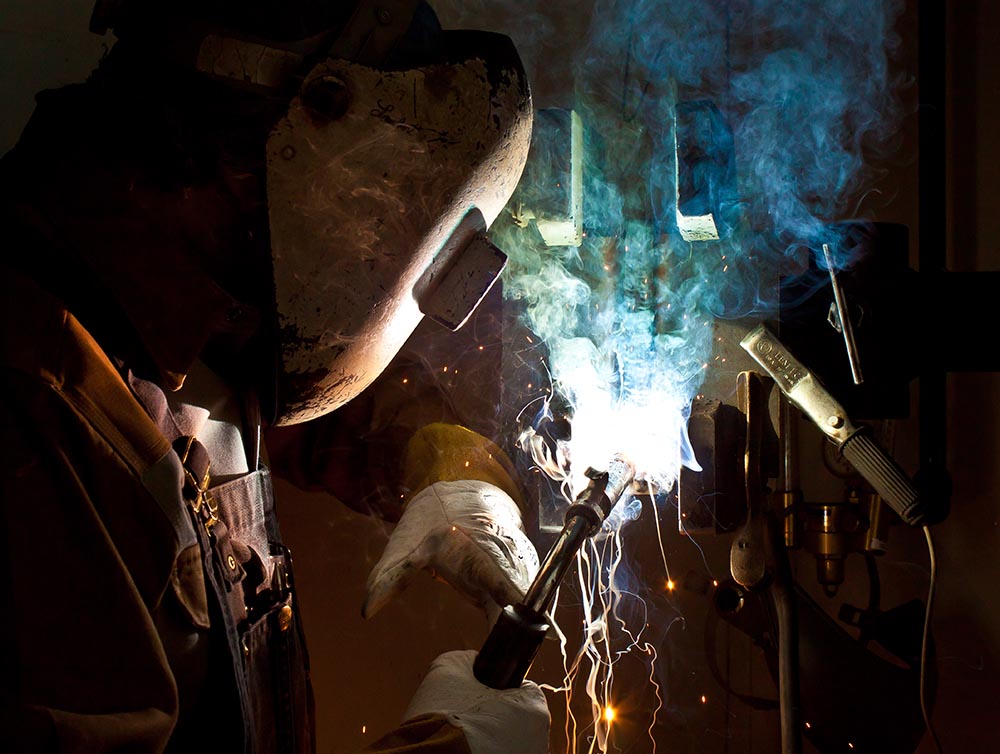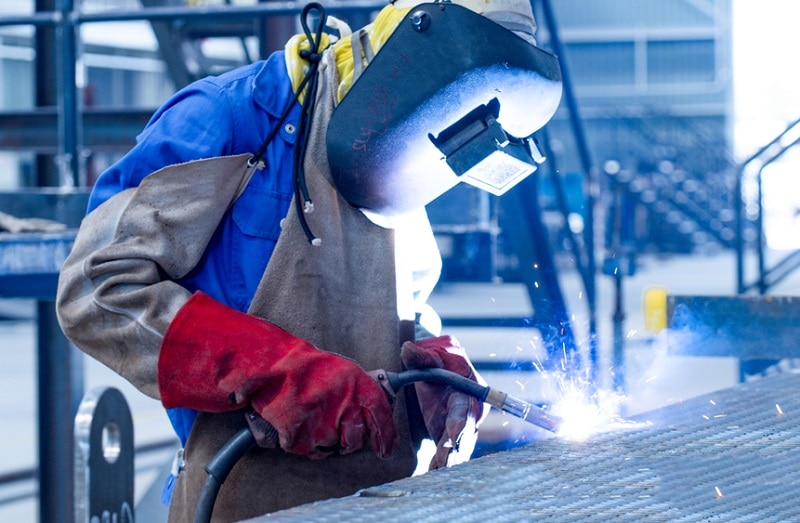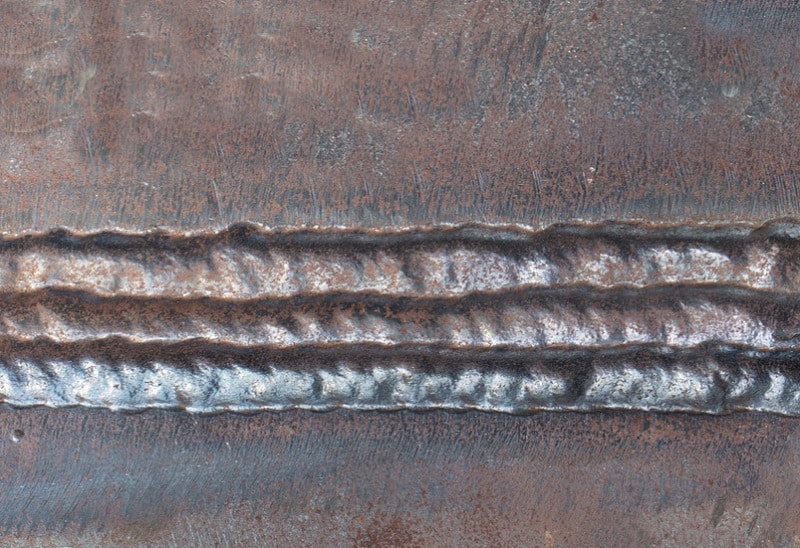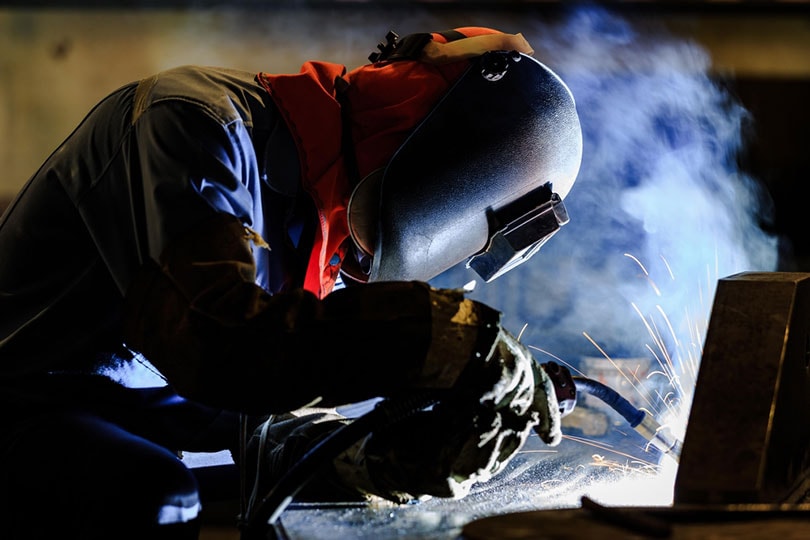Flux Core Welding for Beginners: 7 Tips & Tricks to Get You Started
Last Updated on

So, you’ve decided to take up flux core welding. It’s not a bad choice, especially for those just starting out. The equipment is pretty user-friendly, and you can strike an arc with the pull of a trigger. It’s a lot easier than starting to learn stick, for example.
While flux core is a more unorthodox way of learning to weld (stick welding is usually learned first), you can learn a great deal about the principles of welding. Nevertheless, there will still be a little bit of a learning curve. Here are some tips to help you get started.
Our 7 Tips & Tricks for Beginner Flux Core Welding
1. Make Sure Your Polarity Is Correct
When welding dual shield flux core (flux-cored wire with shielding gas), most wires are DC+, which is direct current electrode positive. This means that 2/3 of the heat in the arc will be directed toward the wire.
However, some wires, especially those that are self-shielded, are intended to be used with DC- which means direct current electrode negative. If you weld them with DC+, you will produce considerable spatter since the wire can’t take that amount of heat. You also won’t get as much penetration into the joint.

2. Learn To Drag the Welding Gun
The preferred travel angle for FCAW is a slight drag. Since there is flux and slag that results, you have to drag to prevent the slag from going underneath the weld. But you also don’t want to drag too much.
Anywhere between 15°–30° is an okay angle to drag the gun. Any more than that and the throat of your weld (the distance from the joint to the surface of the weld) will start to be too convex. Unless otherwise specified, you want a generally flat weld appearance. The temptation to push comes in because this creates a flatter weld appearance. But this not only creates opportunities to trap slag, but the weld can also be too concave; that is why a slight drag is preferred.
3. Watch Your Travel Speed
If you are trying to achieve a smaller size weld, don’t just move the gun faster. There are other variables you need to consider. Try turning your wire speed down first. Then you can move at more or less the same pace. If you move too quickly, you might not let the weld fill in enough.
Moving too quickly can cause undercut and lack of fusion. On the flip side, if you move too slowly, you can also cause an undercut. Another issue with moving too slow is that you are spending more time than needed with a hot arc on the material, putting unnecessary heat into it and causing distortion. Try to dial in your settings to where you can move at a reasonable pace.
4. Clean the Material
Flux core can handle some mill scale and dust in the joint. But in general, you should prep your material to some degree. If the material is rusty, you should grind off the rusty part. If it’s wet, dry it off with a torch or quickly wipe it down. But don’t just clean it off at the beginning; get all the slag off in between passes.
With dual shield, the slag comes off easily. If you are welding a self-shielded flux core, it might be tempting to leave that little bit of slag that just won’t come off. But that will turn out to be the very slag inclusion that shows up on the ultrasonic scan. Then, you really have to dig it out! Try to get in the habit of cleaning all the slag off the surface.

5. Break Off Your Wire
Here’s something that seems so minor but will save you a lot of time in the long run. With hardwire MIG, you have to clip off the tip of your wire with welding pliers or strike a quick arc on another piece of metal to clean up the wire.
With flux core, since it’s not a hard wire, all you do is run your wire out a couple of inches, grasp the wire between your fingers, bend it, and wiggle it back and forth a couple of times to break it off. You won’t always have welding pliers handy, and this will save you time looking for them.
6. Tie in Your Starts and Stops
As it often happens, you will not be able to complete an entire pass without changing body position. Let’s say you can only weld 36” comfortably, but then you have another 36” to go. Don’t hold the wire in the puddle when you finish your first segment to create a nice finish.
Instead, you can leave a small crater, which will look like an undercut. Then when you begin the next segment, strike your arc and quickly move back into the crater you left, holding it for a second, and then continue with your weld. The result will be a more consistent transition, giving the appearance of one weld. This will also save you from having to grind down your starts and stops.
7. Be Comfortable
There’s nothing worse than being in the middle of a pass when you realize that your arm is going to bump into something, or that you might fall over for lack of balance, or your hand is burning because you’re holding it too close to the weld. These things happen, but most of them can be avoided. The most important rule in all welding, especially in flux-core, is to get comfortable.
You have the advantage of being able to weld long passes since you use a wire feeder. However, if you are uncomfortable the whole time and your leg starts cramping up, that long pass can be very painful and likely won’t turn out to be a good weld. Make armrests, sit down, and wear a backhand pad to reflect some of the heat. Do whatever it takes to get as comfortable as possible.

Final Thoughts
As soon as you start laying down pretty beads, you’ll begin to enjoy flux-core. When you develop an eye for the puddle and get some of your muscle memory down, things will start to become more natural. Then you can challenge yourself with more complex positions and fine-tune your fundamentals.
You may also be interested in: MIG Welding for Beginners: 7 Tips & Tricks to Get You Started
Featured Image Credit: Carr Ward Photography, Shutterstock
